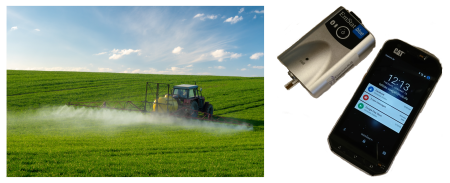
ERC Starting Grant: REDOX SHIELDS
Biological or molecular catalysts built from Earth-abundant elements are envisioned as economically viable alternatives to the scarce noble metals that are currently used in renewable energy conversion. However, their fragility and O2 sensitivity have been obstacles to their adoption in industry. We have recently proposed O2 quenching matrices for protecting intrinsically O2-sensitive catalysts for use in anodic (oxidative) processes. We have demonstrated that even hydrogenases, the highly sensitive metalloenzymes that oxidize H2, can be used under the harsh conditions encountered in operating fuel cells. However, attempts to reverse the concept for the protection of cathodic (reductive) processes, such as H2 evolution, have been unsuccessful so far. In this case, the electrode generates the reducing agents in the form of electrons, which are needed for both H2 generation and reductive O2 quenching. The competition between the two reactions results in insufficient protection from O2 and deactivation of the catalyst.

The objective is to design an alternative electron pathway that relies on H2 as a charge carrier to efficiently shuttle the reductive force to the matrix boundaries and quench the incoming O2. We will develop novel electron mediators with dual functionalities to enable the reversible H2/H+ interconversion and to achieve the complete reduction of O2 to water. We will focus on organic systems, as well as metal complexes based on Earth-abundant elements with tunable ligand spheres, to adjust their redox potentials for the desired direction of the electron flow and toward fast O2 reduction kinetics. The synthetic efforts will be supported by electrochemical modelling to predict the required properties of the redox matrix for efficient protection. After establishing the protection principle, we will demonstrate its practical use for implementing sensitive bio-catalysts for electrochemical H2 evolution under conditions relevant to energy conversion processes.

ERC Proof of Concept: LiveSEN
Goal of LiveSEN is to explore the commercialization possibilities of a nitrate biosensor which was developed based on findings from the ERC Starting Grant “REDOX SHIELDS”. The biosensor has the potential to increase yields in agriculture by 5 to 10% through optimized use of nitrogen fertilizers. This will save costs for farmers and the public while reducing pollution of the environment, especially water resources. This biosensor is designed to be used by untrained users to get accurate nitrate readings in real-time.

Nitrogen, an essential nutrient for plant growth, is used in large quantities in agriculture to ensure sufficient availability for the crops. This practice however holds the risk of over-fertilization having negative economic and environmental impacts. Our objective is to develop a commercial service which integrates a nitrate biosensor into a global fertilization management system which informs farmers about current nitrogen levels in their crops and gives them fertilization recommendations. The electrochemical nitrate biosensor was developed based on findings from the ERC Starting Grant “REDOX SHIELDS”. A cloud computing system will analyze individual measurements for nitrogen recommendation delivery. In addition, it will combine the biosensor results from all farmers in a given geographic region with information from other sources (e.g. weather information /simulations, satellite images from the ESA Copernicus Project, topographic maps) to generate local N-trend maps and compute predictions for N-needs. These information will be updated in real-time and can be conveniently accessed online by farmers through a smartphone application. Within the app, the recommendations will be presented to the end-user as local and regional trend maps displaying both current values and predicted trends in N-levels (Figure 1). Basic information (e.g. low resolution maps without fertilization recommendation) will be made available for everyone free of charge, while more detailed information (e. g. N-need predictions and alerts) can be accessed through a subscription-based service. LiveSEN will help to significantly reduce the amount of nitrogen fertilizer used today based on two main factors:
- The simplicity, accuracy and error-proof nature of the biosensor will enable farmers to deliver reliable data for real-time “in-field” fertilization recommendation and for regional N monitoring.
- The immediate online accessibility and reliability of the regional N-trend maps will trigger sensing campaigns by neighboring farmers that will enhance the recommendation accuracies.
As part of the ERC Starting Grant “REDOX SHIELDS” we developed conducting matrices for the protection of redox enzymes which allows us to manufacture single use electrochemical biosensors for the in-field quantification of nitrate. These biosensors are designed to be used by untrained users for the fast and accurate determination of nitrate levels in liquid samples. Our nitrate biosensor is insensitive to environmental factors like oxygen, temperature or dissolved ions which prevent existing technologies to deliver accurate determination of nitrate levels in complex matrices such as plant samples directly on the field. Furthermore, the sensor does not require sample preparation and is calibration-free which makes fast measurements possible. We have manufactured working prototypes, using disposable printed electrodes, which were already tested in a laboratory environment.

